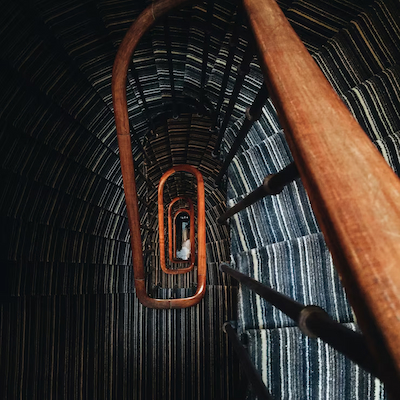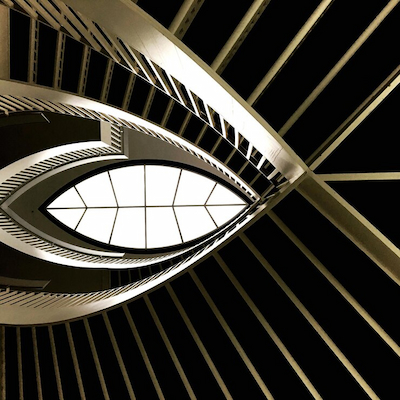
Art Deco, a movement that emerged in the 1920s, is often associated with a period of great exuberance and aesthetic innovation. Characterized by geometric shapes, vibrant colors, and luxurious ornamentation, Art Deco not only influenced architecture but also left a lasting mark on interior design, fashion, and the visual arts. This style reflects an era seeking to break away from previous traditions, embracing modernity and industrialization while celebrating elegance and glamour.
The influence of Art Deco can be seen across the world, from the skyscrapers of New York to the palaces of Paris. Art Deco aesthetics fuse classic and modern elements, where symmetry and geometric patterns play key roles. This unique combination brought new meaning to architecture and design, providing a sense of cultural identity during a time of significant social and political changes. In this article, we will explore the principles of Art Deco, its advantages in decoration, and how to incorporate this luxurious influence into architectural and design projects.
How the Principles of Art Deco Work in Architecture and Design
The principles of Art Deco in architecture and design are grounded in a combination of geometric shapes, straight lines, and bold use of materials. Geometrization is one of the most striking characteristics of this style, with patterns evoking a sense of movement and dynamism. Art Deco architecture often features elaborate facades with details that may include reliefs, mosaics, and other decorative elements that create a rich visual tapestry. These principles not only beautify buildings but also make them iconic and memorable.
Another important aspect of Art Deco is the use of innovative materials such as stainless steel, glass, and even plastics. These materials add a modern flair and reflect the industrial era of the time. Art Deco embraced technology, utilizing new construction and design methods that allowed for the creation of bold and complex structures. As such, Art Deco architecture stands out for its ability to merge form and function, creating spaces that are both aesthetically pleasing and practical.
The color palette used in Art Deco is vibrant and diverse, often combining metallic tones with saturated colors. This color choice enhances the beauty of buildings and evokes specific emotions. The use of strong contrasts and unexpected combinations is a hallmark of this style, contributing to its uniqueness and visual appeal. The harmony between colors, shapes, and materials makes Art Deco captivating and timeless.
Lastly, Art Deco is characterized by its rich and detailed ornamentation. Unlike the minimalism that would become popular in later decades, Art Deco celebrates decoration and the richness of details. Elements such as friezes, sculptures, and decorative panels are common, adding a touch of sophistication and glamour. This ornamentation tells a story, reflecting the aspirations and culture of an era that valued luxury and beauty.

Advantages of Adopting the Art Deco Style in Decoration
Adopting the Art Deco style in decoration brings advantages that can transform an ordinary space into an extraordinary environment. One of the primary benefits is the ability to create an atmosphere of elegance and sophistication. The use of geometric shapes and ornamental details imparts a sense of class and refinement to any space, making it ideal for those wishing to impress and create a luxurious ambiance.
Another advantage is the versatility of the Art Deco style. It can be applied to a variety of settings, from residential to commercial spaces. The blend of classic and modern elements allows Art Deco to integrate harmoniously with different design styles, adapting to individual needs and preferences. Whether in an urban apartment or a countryside house, Art Deco can be adjusted to reflect personal taste.
Furthermore, Art Deco is an excellent way to express the personality and lifestyle of the inhabitants. With its bold lines and vibrant colors, this style allows individuals to stand out and connect with an aesthetic that celebrates beauty and creativity. Incorporating Art Deco elements into a space is a way of telling a visual story and creating an environment that reflects the individuality of its occupants.
Art Deco has an timeless character. Although it emerged in the early 20th century, its features continue to resonate with contemporary trends. This means that investing in Art Deco décor not only brings immediate beauty but also ensures that the style remains relevant and appreciated for many years to come. This timeless quality is one of the reasons why Art Deco continues to be a popular choice among designers and property owners.
How to Incorporate the Influence of Art Deco: Geometric Luxury in Architecture and Design
Incorporating the influence of Art Deco into architectural and design projects can be an exciting and rewarding experience. To start, it’s important to understand the key elements that define this style. By considering geometry, shapes, and patterns, you can create a space that honors Art Deco while adapting to modern needs.
-
Material Selection: Use materials like glass, metal, and high-quality wood. The use of polished and textured finishes can enhance the Art Deco aesthetic, adding a touch of luxury and sophistication.
-
Geometric Shapes: Incorporate geometric shapes into furniture, lighting, and décor. Straight lines and sharp angles can be used to create an environment that reflects the essence of Art Deco.
-
Color Palette: Opt for a color palette that combines metallic tones with vibrant colors. The use of gold, silver, deep blue, and red can create a visually stunning contrast.
-
Ornamental Details: Add ornamental details such as elaborately designed moldings, friezes, and decorative panels. These elements help create depth and visual interest, enriching the space.
-
Furniture: Choose furniture that features clean lines and geometric details. Pieces with luxurious finishes, such as leather and velvet, can add a touch of glamour to the environment.
-
Lighting: Invest in lighting fixtures that reflect the Art Deco style, such as crystal chandeliers or lamps with geometric designs. Proper lighting can highlight the beauty of decorative elements and create a welcoming atmosphere.
By following these guidelines, you can create a space that not only incorporates the influence of Art Deco but also becomes a reflection of your personal style. Every element should be carefully considered to ensure that the final result is harmonious and visually striking. The beauty of Art Deco lies in its ability to tell a story and create a unique experience for those who inhabit the space.

Did You Enjoy Learning About the Influence of Art Deco: Geometric Luxury in Architecture and Design?
Art Deco is a style that transcends time, bringing an incomparable combination of elegance and modernity. By exploring its features and how to incorporate them into architectural and design projects, you can transform any space into a true sanctuary of beauty and sophistication. The richness of details and the harmony of forms make Art Deco an irresistible choice.
As you delve into this universe, you will discover that Art Deco is not just a style but a form of expression that reflects the creativity and innovation of an era. With its enduring influence, Art Deco continues to inspire new generations of designers and architecture enthusiasts, ensuring that its beauty and charm remain timeless.
Frequently Asked Questions
What is Art Deco?
Art Deco is a style that blends luxury and geometric forms. It emerged in architecture and design in the 1920s and 1930s.
How does Art Deco influence architecture today?
The influence of Art Deco: geometric luxury in architecture and design is still visible in many modern buildings. Clean lines and elegant details are popular.
What are the characteristics of Art Deco design?
Art Deco design features geometric shapes, vibrant colors, and luxurious materials. Think marble, metal, and glass!
Where is Art Deco popular?
Art Deco is loved worldwide! Countries like France, the U.S., and Brazil have many examples of this style.
How can I apply the Art Deco style in my home?
Use furniture with straight lines and classic colors. Add decorative pieces like mirrors and metal light fixtures. The influence of Art Deco: geometric luxury in architecture and design can be in your home!

